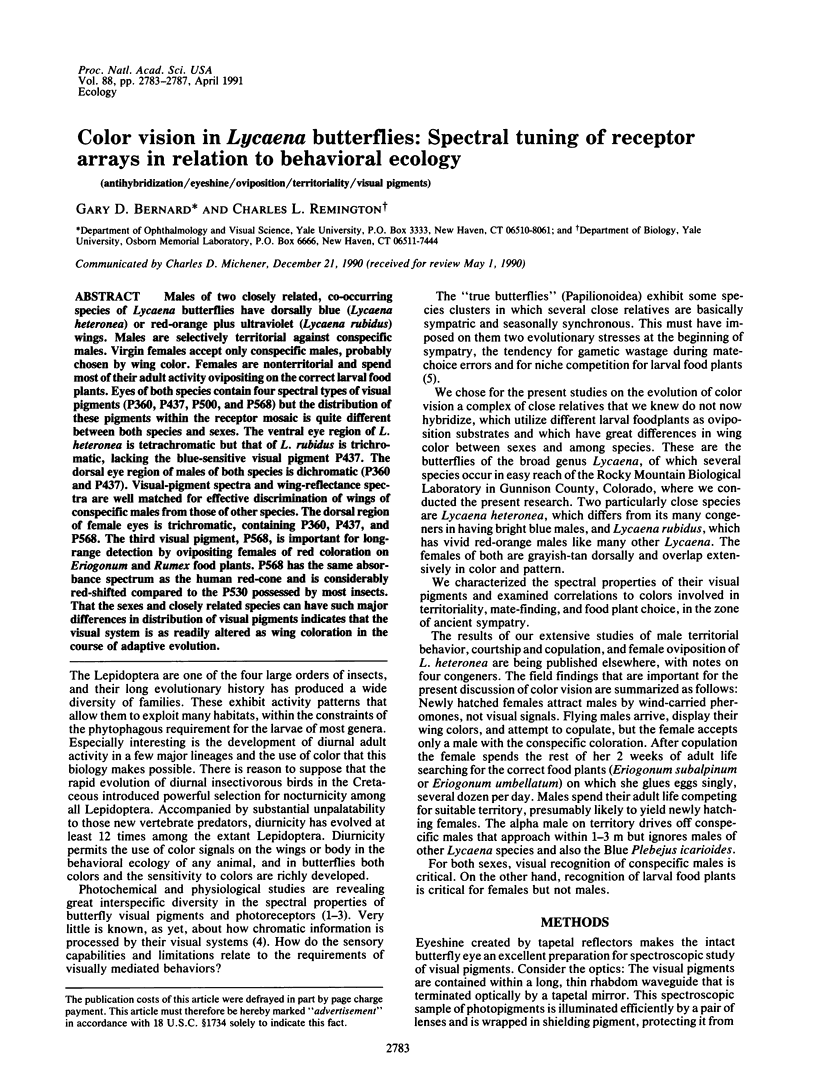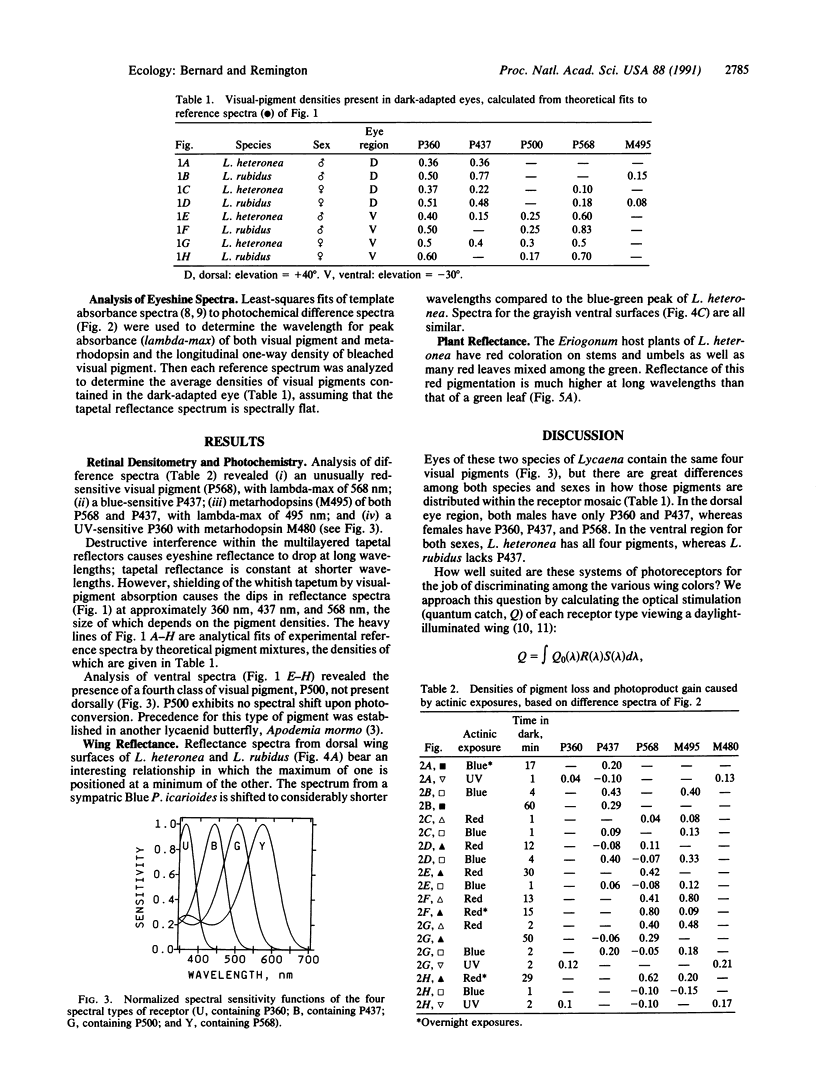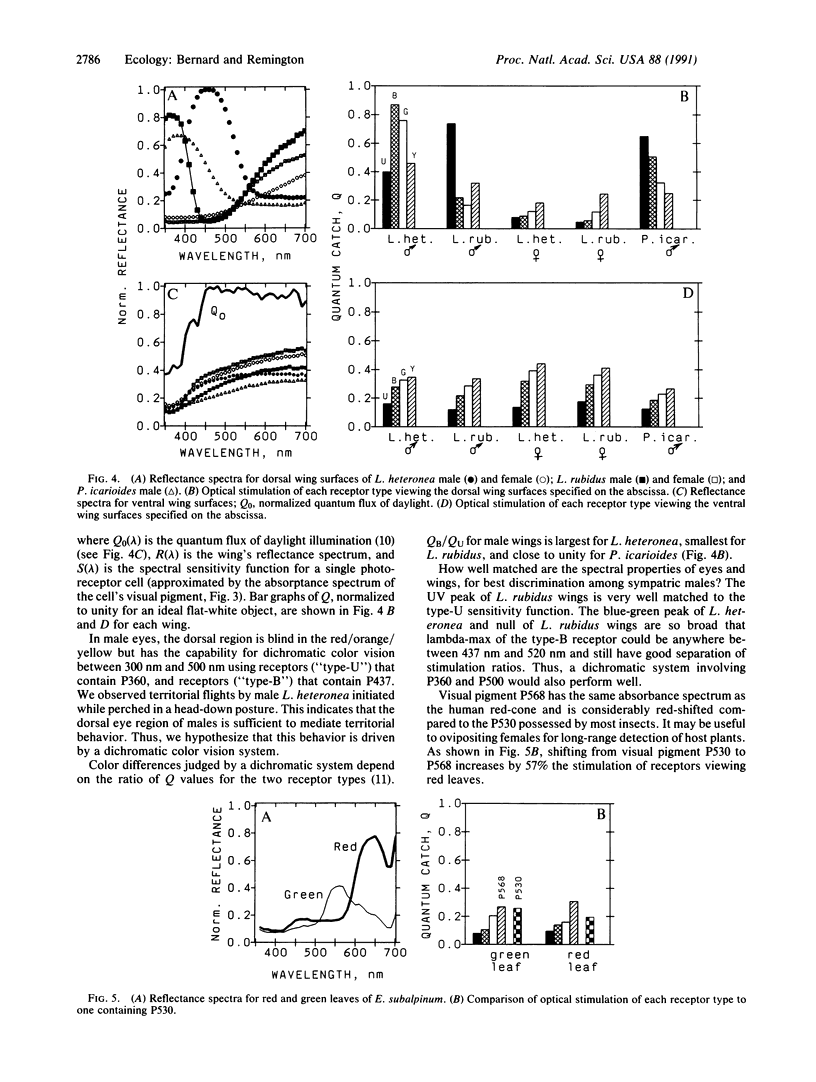Abstract
Males of two closely related, co-occurring species of Lycaena butterflies have dorsally blue (Lycaena heteronea) or red-orange plus ultraviolet (Lycaena rubidus) wings. Males are selectively territorial against conspecific males. Virgin females accept only conspecific males, probably chosen by wing color. Females are nonterritorial and spend most of their adult activity ovipositing on the correct larval food plants. Eyes of both species contain four spectral types of visual pigments (P360, P437, P500, and P568) but the distribution of these pigments within the receptor mosaic is quite different between both species and sexes. The ventral eye region of L. heteronea is tetrachromatic but that of L. rubidus is trichromatic, lacking the blue-sensitive visual pigment P437. The dorsal eye region of males of both species is dichromatic (P360 and P437). Visual-pigment spectra and wing-reflectance spectra are well matched for effective discrimination of wings of conspecific males from those of other species. The dorsal region of female eyes is trichromatic, containing P360, P437, and P568. The third visual pigment, P568, is important for long-range detection by ovipositing females of red coloration on Eriogonum and Rumex food plants. P568 has the same absorbance spectrum as the human red-cone and is considerably red-shifted compared to the P530 possessed by most insects. That the sexes and closely related species can have such major differences in distribution of visual pigments indicates that the visual system is as readily altered as wing coloration in the course of adaptive evolution.
Full text
PDF




Selected References
These references are in PubMed. This may not be the complete list of references from this article.
- Bernard G. D. Noninvasive optical techniques for probing insect photoreceptors. Methods Enzymol. 1982;81:752–759. doi: 10.1016/s0076-6879(82)81101-4. [DOI] [PubMed] [Google Scholar]
- Bernard G. D. Red-absorbing visual pigment of butterflies. Science. 1979 Mar 16;203(4385):1125–1127. doi: 10.1126/science.203.4385.1125. [DOI] [PubMed] [Google Scholar]
- Goldsmith T. H. Optimization, constraint, and history in the evolution of eyes. Q Rev Biol. 1990 Sep;65(3):281–322. doi: 10.1086/416840. [DOI] [PubMed] [Google Scholar]
- MacNichol E. F., Jr A unifying presentation of photopigment spectra. Vision Res. 1986;26(9):1543–1556. doi: 10.1016/0042-6989(86)90174-4. [DOI] [PubMed] [Google Scholar]


